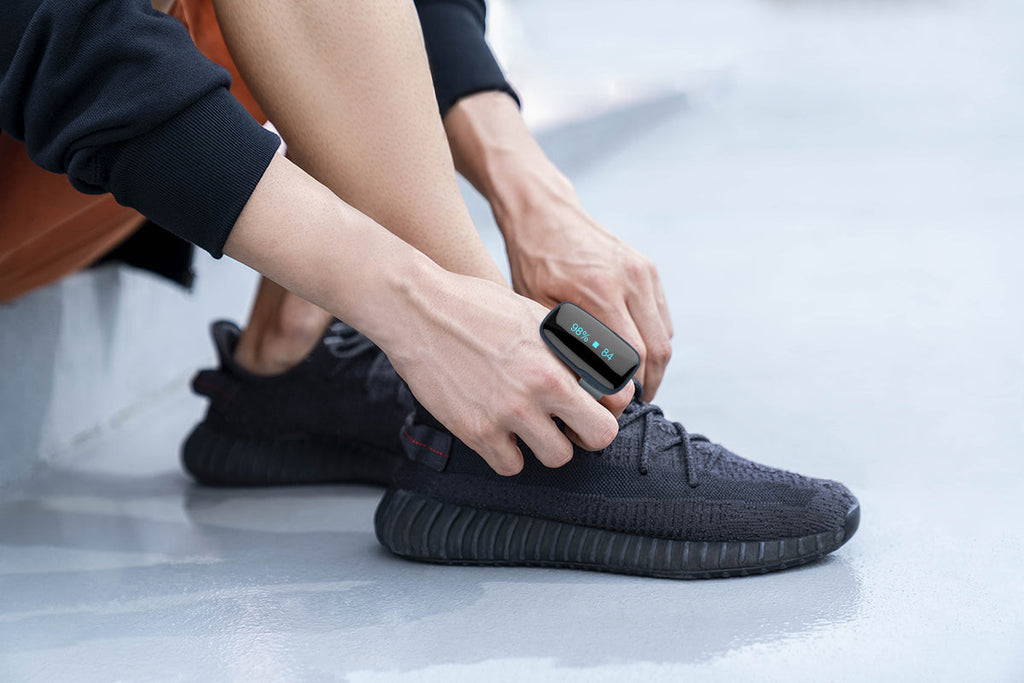COVID-19 is categorized by the World Health Organization as an infectious disease that affects the respiratory system mainly. This disease is caused by the virus SARS-CoV-2.
This disease usually causes mild and moderate respiratory symptoms. However, in some cases, its symptoms can be severe and result in hospitalization.
As COVID-19 interferes with the person's ability to breathe normally, the oxygen levels in the blood tend to decrease. This is often the cause of complications while being infected with the virus.
Fortunately, blood oxygen levels can be easily monitored at home with a pulse oximeter. This tool allows the person to seek medical attention before the condition worsens.
We'll explain in this article how COVID-19 affects blood oxygen and why you need a pulse oximeter.
How does COVID-19 affect blood oxygen?
Once the virus enters the body, it moves into the respiratory system, where it replicates and attacks the host.
During its attack, it causes multiple symptoms that can be easily confused with those of a common cold or flu. However, one of its signature symptoms is hypoxia.
Hypoxia refers to a lack of sufficient oxygen in the body tissues to function appropriately. In this case, COVID-19 reduces the oxygen levels in the blood. This can become life-threatening if the oxygen levels drop and maintain lower than they should.
The reason why blood oxygen drops during COVID-19 is still not fully understood. However, some studies suggest it could be caused by an excessive release of immature blood cells into the bloodstream or a deficiency in gathering oxygen in the lungs.
Why are blood oxygen levels important?
The body is a complex system that relies on different processes and elements to properly function. One of these vital elements is oxygen.
Every organ, including the heart and the brain, requires enough oxygen to continue working. First, this oxygen is gathered by the lungs as the person breathes and then distributed to the body through the bloodstream.
If the lungs cannot gather enough oxygen, the blood oxygen levels begin dropping lower than they should. Therefore, the bloodstream won't be able to supply enough oxygen to the organs that perform vital functions. This can compromise the body's functioning and result in a severe or life-threatening condition.
Low blood oxygen levels can also cause:
· Shortness of breath
· Tachycardia
· Headache
· Chest pain
· Dizziness
Why do you need a pulse oximeter?
A pulse oximeter is a simple and effective device that allows the doctor, nurse, or infected person to check blood oxygen levels. This reliable tool has become an indispensable device for anyone suffering from COVID-19.
It is essential to understand that the treatment for this disease often varies according to the symptoms. Therefore, it is not always the same for each person. Moreover, the treatment plan can change according to the person's blood oxygen levels.
Not every person infected with COVID-19 develops hypoxia or gets their blood oxygen levels compromised. However, it is vital to keep blood oxygen levels monitored. Just in case they drop to a dangerous level.
Furthermore, everyone suffering from COVID-19 should constantly check their blood oxygen using a pulse oximeter, even if they don't manifest any symptoms. The reason why is that COVID-19 can cause silent hypoxia. This means that the blood oxygen levels drop without showing any signs.
Usually, low blood oxygen levels are accompanied by fatigue, shortness of breath, or difficulty breathing. However, in some cases, blood oxygen can drop to a dangerous level without the person noticing it. Therefore, only a pulse oximeter can help the person know if the blood oxygen levels are adequate or if medical attention is needed.
How does a pulse oximeter work?
The pulse oximeter can analyze and measure the amount of oxygen inside the blood cells. They do it painlessly using a cold light.
When the person places a finger inside a pulse oximeter and activates it, the device emits a beam of light that passes through the tissues. The pulse oximeter then analyzes the amount of light that reaches the opposite end after passing through the finger. This allows it to determine the saturation of oxygen inside the cells.
High oxygen concentrations allow less light to pass through. Meanwhile, low oxygen concentrations allow more light to pass through the finger.
The blood oxygen level is displayed on the device after the test concludes.
It is essential to know that certain aspects can interfere with the reading. Nail polish and dark skin tones can reduce the amount of light that passes through the finger. This can result in a slightly wrong reading where the value displayed is higher than it really is.
When should you seek medical attention?
Oxygen levels between 95% - 100% are considered normal and healthy.
Therefore, it is highly recommended to contact a doctor if the blood oxygen level displayed on the pulse oximeter falls under 95%. Moreover, values under 90% are considered a medical emergency, even if the person has no symptoms.
If blood oxygen levels remain within low and dangerous levels, the person might need oxygen therapy. This consists in providing extra oxygen to the patient through different methods.
If the condition is not entirely life-threatening, oxygen can be provided and regulated at the hospital or home through a nasal cannula. However, if blood oxygen levels drop to a risky life-threatening amount, the doctor might opt to intubate the patient.
How to improve blood oxygen levels at home?
There are a few ways to improve blood oxygen levels at home. Nonetheless, all of them should be previously consulted and discussed with the doctor. Some of them include the following:
· Going for a short walk to increase blood flow
· Getting the fresh air from open windows
· Sleep on your side or your stomach
· Don't smoke
Although these methods won't cure the disease, they can improve blood oxygen levels. Nonetheless, it is vital to constantly check it using a pulse oximeter. This can prevent complications and allow you to receive early treatment.
WRITTEN BY VIBEAT
Related Blogs
Recommended Products





